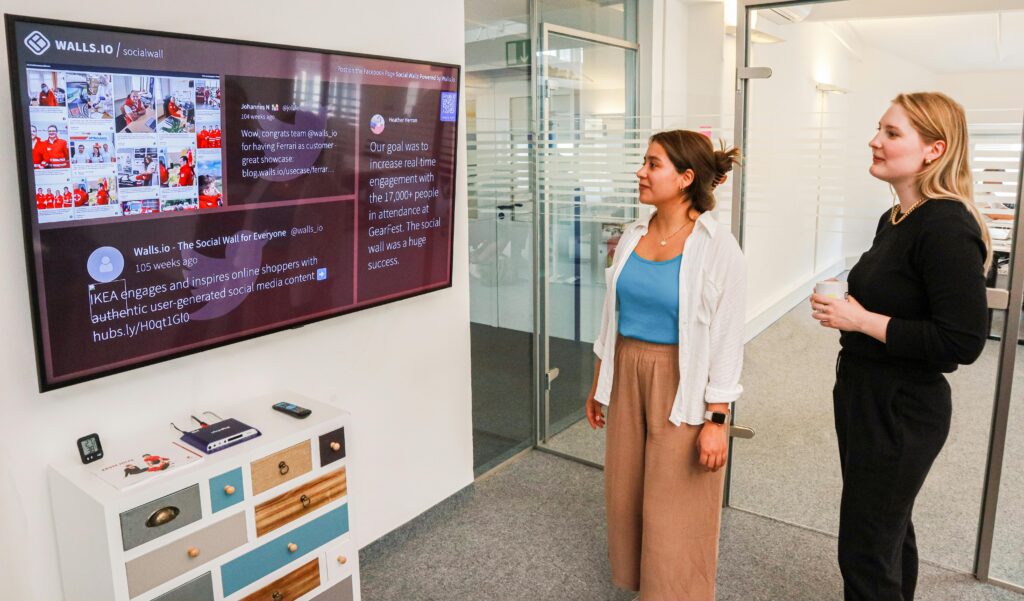Table of Contents
Introduction
In today’s fast-evolving workplace environment, the conversation around gender equality and empowerment has never been more critical. Empowering women in the workplace isn’t just a matter of social justice or equality; it’s a catalyst for innovation, productivity, and growth. Yet, despite significant strides towards equality, women often face unique challenges that hinder their full participation and advancement.
This blog unveils “7 Secrets to Empowering Women in the Workplace You Need to Know Now,” offering actionable insights and strategies that can transform workplaces into bastions of empowerment for women. From cultivating an inclusive culture to celebrating every milestone, these secrets are your toolkit for creating a more equitable, dynamic, and thriving work environment. Let’s dive in and explore how we can collectively uplift and empower women in our workplaces, setting the stage for a future where everyone, regardless of gender, can achieve their fullest potential.

1. Cultivate an Inclusive Culture (Empowering Women)
Why Inclusivity is the Bedrock of Empowerment
At the heart of empowering women in the workplace lies the foundation of an inclusive culture. An environment that values diversity, equity, and inclusion is critical for women to feel valued, heard, and empowered to contribute their best. But cultivating such a culture goes beyond mere policies and quotas; it requires a profound commitment to understanding, respecting, and celebrating the unique perspectives and experiences everyone brings to the table.
Fostering Openness and Belonging
Creating an inclusive culture starts with fostering a sense of belonging and openness. Encourage open dialogue about gender equality and inclusivity, allowing employees to share their experiences and suggestions for improvement. This openness not only enlightens but also helps in identifying unconscious biases and barriers that might be holding women back.
Implementing Bias Training and Inclusive Hiring Practices
To further embed inclusivity in the workplace DNA, organizations must implement comprehensive bias training for all employees, especially those in hiring and leadership positions. Such training helps in recognizing and mitigating unconscious biases, ensuring that hiring, promotion, and daily operational decisions are fair and equitable. Additionally, adopting inclusive hiring practices that actively seek to diversify the talent pool is crucial. This means going beyond traditional recruitment channels and criteria to reach candidates from various backgrounds, experiences, and genders.
Celebrating Diversity (Empowering Women)
Finally, celebrating diversity through events, discussions, and recognition programs can reinforce the value of an inclusive culture. Highlighting the achievements and contributions of women in the workplace not only empowers them but also sets a powerful example for others. It’s about creating an environment where every woman knows that her voice matters, her work is appreciated, and her potential is limitless.
Cultivating an inclusive culture is not a one-time effort but a continuous journey towards creating a workplace where everyone, especially women, can thrive. By embracing these practices, companies can unlock the full potential of their workforce, fostering innovation, empathy, and a sense of community that propels everyone forward.

Promote Women to Leadership Positions (Empowering Women)
Breaking the Glass Ceiling Together
Elevating women to leadership positions is not just a gesture of empowerment; it’s a strategic move that enriches organizations with diverse perspectives and leadership styles. However, the path to the top can be riddled with obstacles, from unconscious biases to a lack of visible role models. Here’s how we can change the narrative and break the glass ceiling, once and for all.
Strategies for Leadership Equality
To promote women to leadership positions, organizations must first acknowledge the existing gaps and set clear, measurable goals for gender diversity in leadership roles. This might include commitments to gender parity in executive positions and board memberships within a specific timeframe. Transparency in progress towards these goals is key to accountability and continued effort.
Mentorship and sponsorship programs are also vital, pairing aspiring female leaders with experienced mentors who can guide, advocate for, and help navigate the challenges of climbing the corporate ladder. Additionally, creating leadership development programs tailored to address the unique challenges women face can equip them with the necessary skills and confidence to pursue higher roles.
Implement Mentorship Programs (Empowering Women)
Guiding the Next Generation of Female Leaders
Mentorship is a powerful tool in the empowerment arsenal, offering guidance, knowledge sharing, and support to women as they navigate their career paths. Effective mentorship programs can bridge the gap between potential and opportunity, providing women with the resources and confidence to aspire to and achieve leadership roles.
Crafting Effective Mentorship Programs
Successful mentorship programs start with careful pairing, matching mentors and mentees based on professional goals, interests, and personalities. These programs should be structured yet flexible, allowing for both formal and informal interactions. Regular check-ins, goal setting, and feedback sessions help in tracking progress and ensuring that the mentorship is beneficial for both parties.
Beyond one-on-one mentoring, group mentorship and peer mentoring circles can foster a sense of community and collective growth, encouraging women to support and learn from each other.

Encourage Work-Life Balance (Empowering Women)
Achieving Harmony in Work and Life
The quest for work-life balance is more than a personal goal; it’s a crucial factor in women’s empowerment in the workplace. Women often juggle multiple roles, and without the support to balance these demands, achieving professional success can come at the cost of personal well-being. Organizations play a pivotal role in creating an environment where work-life balance is not only possible but encouraged.
Strategies for Supporting Work-Life Balance
Flexible working arrangements are a cornerstone of work-life balance. This includes options for remote work, flexible hours, and part-time positions, allowing women to tailor their work schedules to fit their personal lives. Such policies acknowledge and accommodate the diverse responsibilities and challenges women face, enabling them to thrive both at work and at home.
Moreover, supportive policies such as generous parental leave, child care support, and wellness programs signal an organization’s commitment to its employees’ overall well-being. These initiatives not only empower women but also cultivate a workplace culture that values and respects the individual needs of all employees.
Empowering women in the workplace through leadership promotion, mentorship, and work-life balance initiatives creates a ripple effect of benefits. It leads to more diverse and inclusive workplaces, drives innovation and business success, and sets a foundation for a more equitable society. By committing to these strategies, organizations can play a pivotal role in shaping a future where women are empowered to achieve their fullest potential, both professionally and personally.
Provide Professional Development Opportunities (Empowering Women)
Investing in Women’s Growth and Success
Professional development is a key pillar in the strategy to empower women in the workplace. By investing in the growth and education of their female employees, companies not only enhance their own talent pool but also signal a commitment to gender equality and the advancement of women in their fields. This section explores how organizations can provide these vital opportunities.
Pathways for Continuous Learning
Creating pathways for continuous learning involves more than just offering training programs; it’s about fostering a culture that values and encourages professional growth at all levels. This can be achieved through various initiatives:
Tailored Training Programs: Develop training programs that are specifically designed to address the skills and leadership gaps women face in your industry. This could include leadership training, technical skills development, negotiation workshops, and more.
Access to Learning Resources: Provide easy access to learning platforms, courses, webinars, and conferences. Encouraging attendance and participation in industry events can also broaden their network and exposure to new ideas.
Support for Educational Pursuits: Offer support for further education through tuition reimbursement programs or flexible scheduling for those pursuing degrees or certifications relevant to their career advancement.

Foster a Safe and Supportive Environment (Empowering Women)
Creating Spaces Where Women Feel Valued
A safe and supportive workplace environment is foundational to empowering women. This means not only physical safety but also psychological safety, where women feel confident to express their ideas, report issues, and pursue their careers without fear of discrimination, harassment, or bias.
Implementing Comprehensive Policies and Practices
To foster such an environment, organizations need to implement and enforce comprehensive policies that protect women from harassment and discrimination. This includes:
Clear Anti-Harassment Policies: Develop and communicate clear policies that define unacceptable behavior, along with the procedures for reporting and addressing complaints. These policies should be backed by a commitment from the top levels of management.
Regular Training: Conduct regular training sessions for all employees to understand these policies, recognize harassment, and encourage bystander intervention. Training should also cover diversity and inclusion more broadly, emphasizing respect and empathy for all colleagues.
Support Systems: Establish support systems that offer confidential advice and support to employees who experience harassment or discrimination. This could include access to counseling services, legal advice, and a responsive HR department.
Promoting a Culture of Respect: Beyond policies and procedures, fostering a culture of respect and support involves everyday actions and attitudes. Leaders and managers should model this behavior, recognizing and celebrating diversity, and encouraging open, respectful communication among all team members.
Creating a workplace that offers professional development opportunities and is safe and supportive not only empowers women but also enhances the overall health and productivity of the organization. It’s a testament to a company’s values and its dedication to creating an environment where everyone, regardless of gender, can succeed and feel valued.

Celebrate Women’s Achievements (Empowering Women)
Recognizing and Celebrating Success
Celebrating women’s achievements in the workplace is a crucial step in fostering an environment of empowerment and recognition. It’s not just about acknowledging success; it’s about setting a precedent that women’s contributions are invaluable to the organization and society at large. This acknowledgment can take many forms, from formal awards and recognition programs to everyday gestures of appreciation.
Ways to Celebrate Achievements
Spotlight Success Stories: Regularly feature the successes of women in your organization through internal newsletters, meetings, or on your company’s social media platforms. Highlighting their stories not only celebrates their achievements but also inspires others.
Awards and Recognition Programs: Implement awards and recognition programs that specifically acknowledge the contributions and achievements of women. This could include leadership awards, innovation challenges, or recognition for community service.
Mentorship and Promotion Opportunities: Recognizing achievement can also mean providing opportunities for advancement. Use these occasions to identify potential candidates for mentorship programs or for promotion to leadership roles.
Conclusion
Empowering women in the workplace is not a one-time initiative but a continuous journey that requires commitment, action, and a willingness to change. From cultivating an inclusive culture to celebrating women’s achievements, each step taken is a move towards a more equitable, productive, and innovative workplace. These efforts benefit not only the women they directly impact but also the organization as a whole, driving growth and fostering a culture of respect and diversity.
As we strive to create more empowering environments for women, it’s crucial to remember that empowerment also comes from within. Tools and platforms that support personal and professional growth are invaluable in this journey. One such tool is the Goddess app, designed specifically for women looking to empower themselves. The Goddess app offers resources, community support, and tools tailored to the needs and challenges women face, making it an essential companion for anyone looking to enhance their personal and professional life.
We encourage you to take the next step in your empowerment journey by exploring the Goddess app. Whether you’re seeking mentorship, looking to expand your professional network, or just need a dose of inspiration, the Goddess app is there to support and empower you to reach new heights. Let’s continue to uplift and support one another, forging a future where every woman has the opportunity to shine and succeed.
Join the movement. Empower yourself. Discover the Goddess within.





